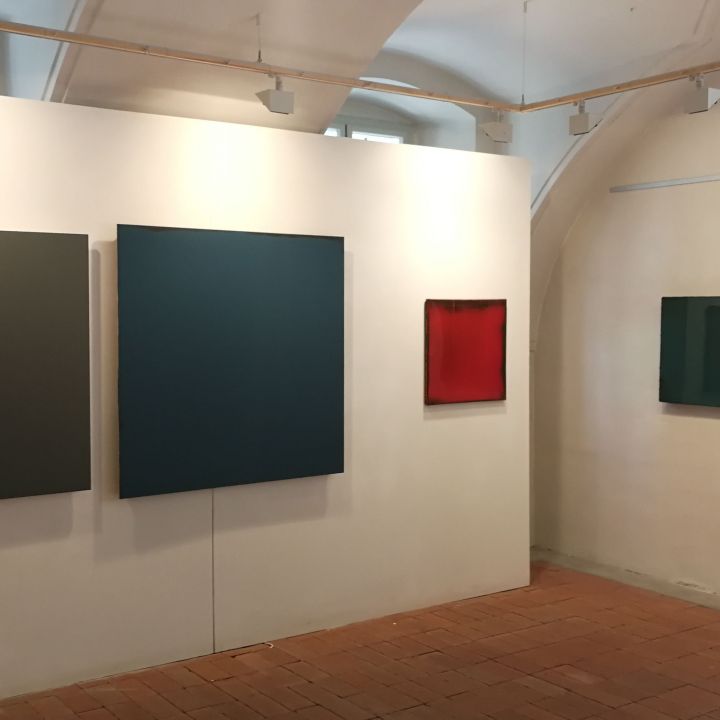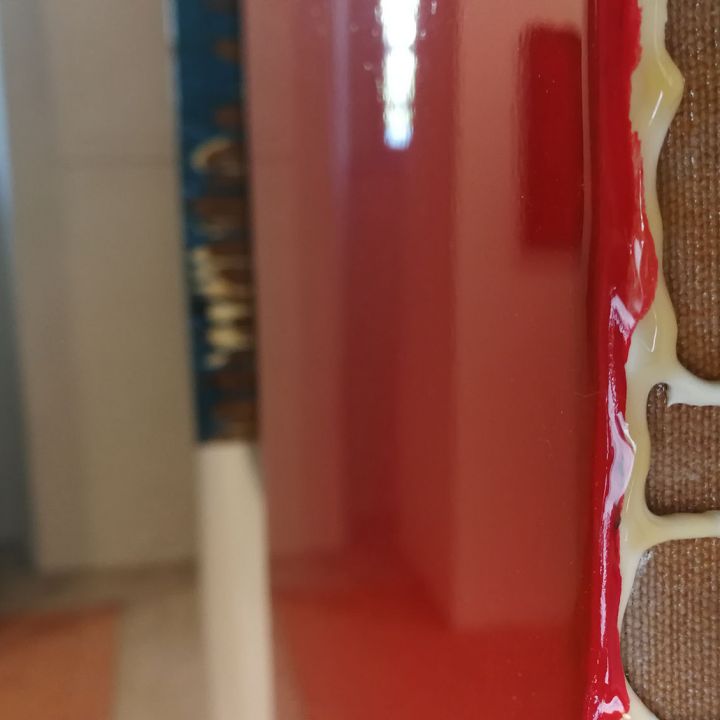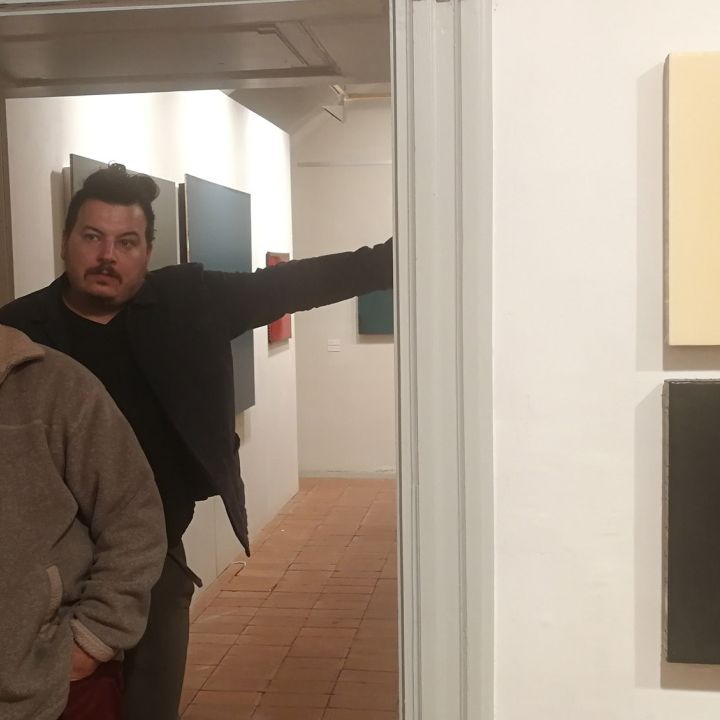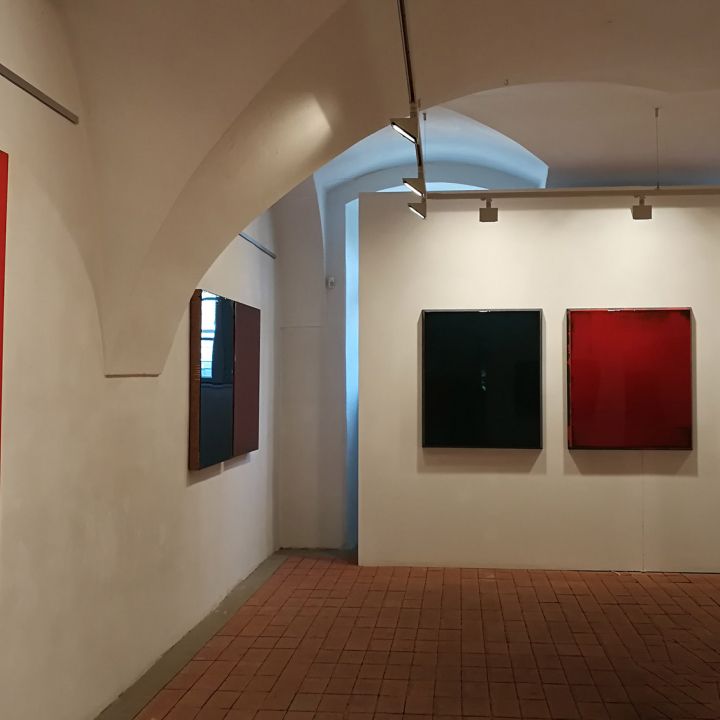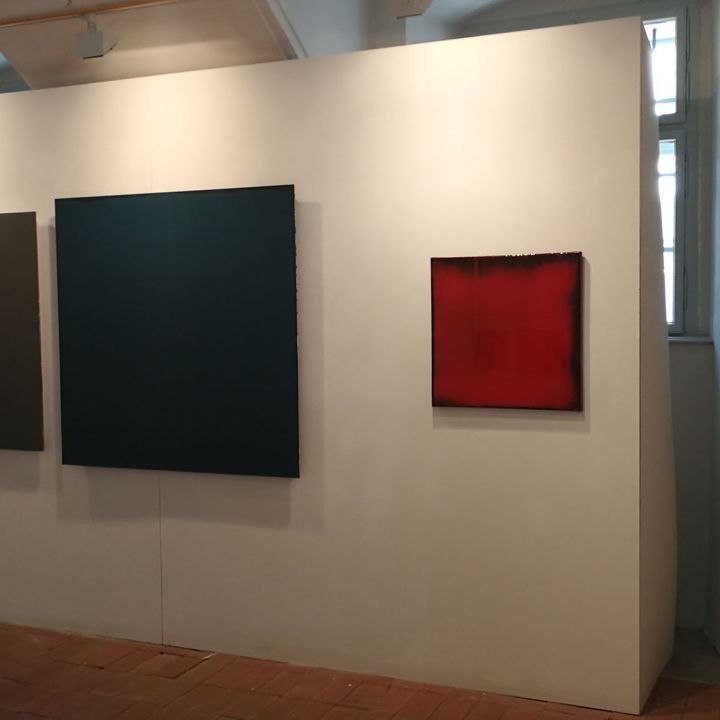A special exhibition of monochrome paintings by Zoltán Feledy Gyula from Kötcse has opened. He started painting in the 1990s, by which time he had already had successful years as a veterinarian and mayor.
Through his uncle, Kossuth Prize-winning graphic artist Gyula Feledy, he was understandably connected to modern art. His special collection of prints, followed by his study of the paintings of Joan Miro and Paul Klee, led him to a new interest in artistic expression. Zoltán Feledy's artist friends György Szőke and János Megyik encouraged him to experiment with painting: his works are spontaneous expressions of joyful painting based on a kind of free pictorial association. His early, elegant gestural paintings, with their lively rhythms of colour, projections and pulsations make the process of the creation of the mark a tangible experience. The intense drama of the birth of the archetype has been replaced in recent years by an introverted attitude. In his new series the colours have been reduced to a single character, the outwardly expansive, motoric gesture of the calligraphy giving way to a still, contemplative and meditative state. They are preoccupied with the inner magic of colour and matrix. A selection of his paintings of the latter has opened in Veszprém.
A monochrome image is an image object created using a single colour. Without concrete shapes and forms it appears at first sight to be an empty surface of colour, where the colour does not convey any underlying content or abstract message, but merely demonstrates itself. Despite their apparent sameness, monochrome paintings vary enormously depending on the temperament of the painter, his methods, the means he uses, the quality of the colours and the materials. Gyula Zoltán Feledy has also experimented with a unique technique in his work over the years. He turned away from the traditional methods of painting and created his individual world by casting, dipping, flowing, sanding and altogether by using a variety of new methods of printmaking. Using a paint roller or by pouring, he applies 4-5 layers of paint overlapping one another on the canvas and then peels off the excess paint. The result is a surface that leaves no brush marks but is not a single homogeneous colour. The deep layers model and suggestively tint the overlying field of colour. On the other hand the image is also structured by the gesture of the hand used in its formation. Pressure of varying intensity causes the overlying layer of colour to open up, revealing the underlying field of colour at the bottom of the painting. The artist does not allow any other personal gesture on the surface of the painting, but enhances the sensual beauty of the colour dimensions by the artistic polish of the surface. Sometimes he creates dull, cool and slightly distanced matt surfaces, at other times the brilliant intensity of colour expression built up from multiple layers of paint and varnish provides a similarly unique aesthetic experience. The interplay of colour dimensions, the artistry of the layers that emerge from below, the textural specificity of the perfect polish and the heightened character of the colour used itself offer an artistic experience. All this is combined with incredible care and precision.
However, Gyula Feledy's paintings are not two-dimensional paintings, but rather shapes that can be interpreted in space. The painting is not the same as the elaborate field of colour that appears in front of us. It continues on the side of the work in the dripping paint splatters, where the artist's subject himself is revealed. The struggle with the material is a document of the creation of the painting, as the various layers of colour in the construction of the painting leave their mark on the side of the canvas. The artist's painstakingly polished, artistic surfaces of colour thus conceal a sensual world, rich in texture, which also captures the dramatic moment of the handiwork of the execution. In this way, Zoltán Feledy creates a kind of passage between plane and space: the spatiality of his paintings, the paint running down the edges of the canvas folded on the blind, is as much an essential part of the work as the mirror itself. The spiritual aspect of the form, the psychic sense of infinity, the utopia of immateriality is accompanied by the struggle to create the perfect optical dimension. In this way his creations sum up the heavenly and earthly, metaphysical and materialistic dimensions of art.
Dr. Melinda Géger

